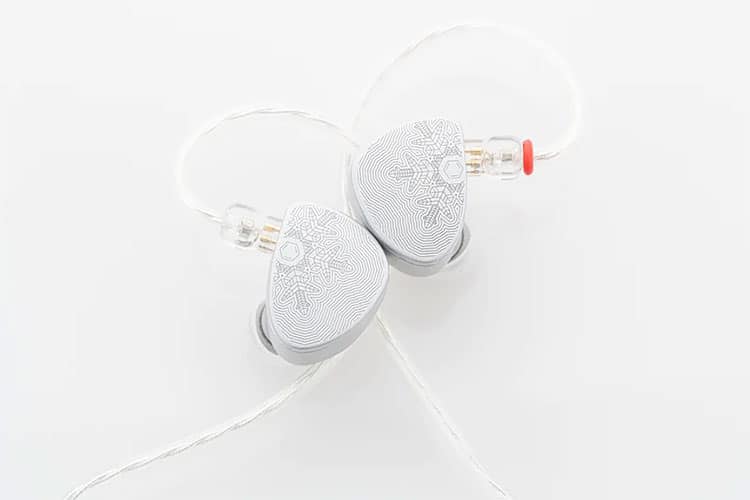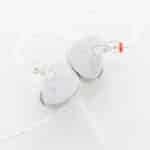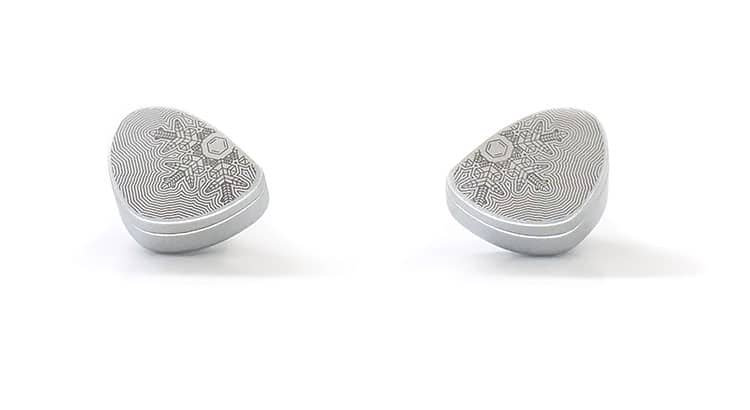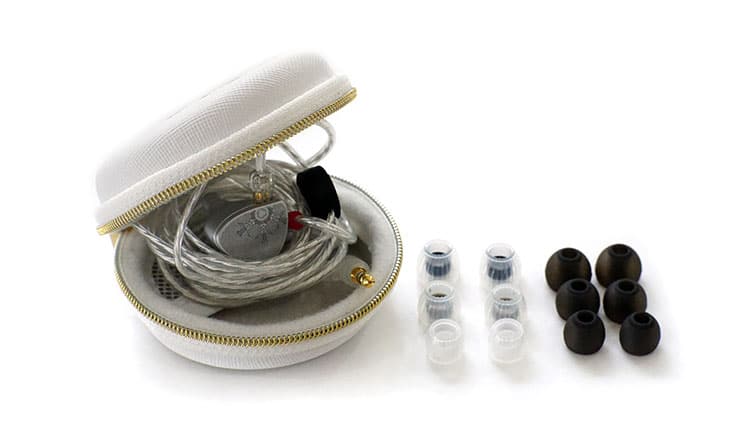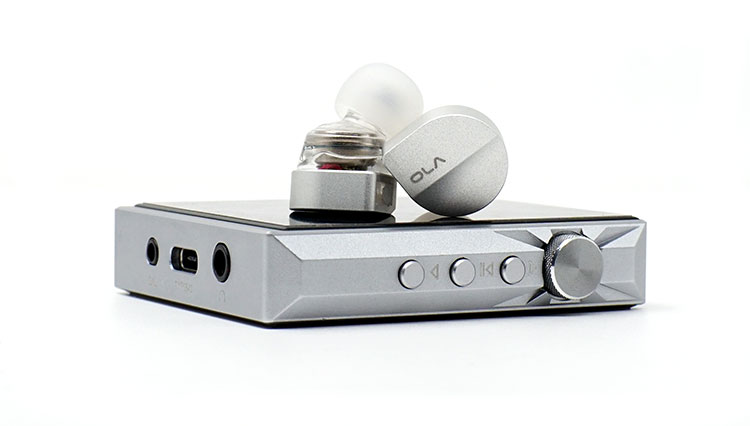In today’s post, Cheryl reviews the Moondrop Aria Snow Edition which is a revised tuning of the original IEM using a 10mm DLC dynamic driver. It is priced at $79.99
Disclaimer: This sample was sent to us in exchange for our honest opinion. We thank Moondrop and Shenzhen Audio for this opportunity.
To read more about Moondrop products we have previously featured on Headfonics, click here.
Note, that this article follows our latest scoring guidelines which you can read here.
Moondrop is back with a new refresh of the 2021 Aria, called the Snow Edition. I’m quite surprised by this drop, as the company rarely produces a refresh early on. For those not familiar with the original, these are extremely popular IEMs, one of the best ones for the sub-$100 market.
It isn’t an MKII with some tweaks as it has a completely different driver inside, like a reimagined Moondrop Kanas Pro, in the Aria form factor. It is priced the same as before at $79.99 and aims to compete in the sub-$100 market, and yes, including the original 2021 Moondrop Aria.
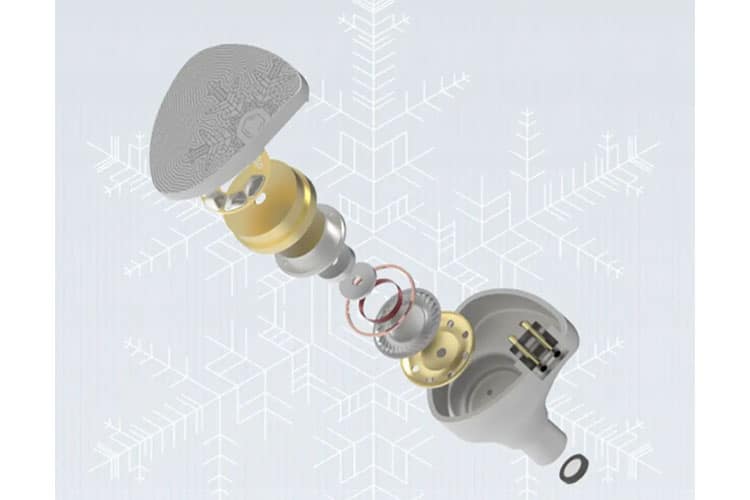
Tech Highlights
The Moondrop Aria Snow Edition is a single 10mm dynamic driver universal monitor. Unlike the original launched in 2021, it uses a different driver inside.
This version has the first-generation diamond-like carbon (DLC) composite diaphragm used in the Kanas Pro edition while maintaining a similar cavity structure. It still uses an ultra-fine imported Daikoku CCAV voice coil, similar to the one used in the original Aria.
The DLC diaphragm is a composite of nano-thickness diamond-like amorphous carbon deposited on a high internal resistance base material. Its high rigidity and high damping produce refined treble response and natural timbre.
To cap it off, the driver tuning is still consistent with Moondrop’s VDSF tuning curve. It is tuned to have a clean and crisp response throughout its frequency range.
Design
It is said to use the same ergonomic material shell as the 2021 Aria, with one key difference. It has a brand-new surface coating, allowing it to produce the snowflake pattern, perfectly embodying the “Snow” in Aria Snow Edition.
Up close, the design looks really stunning with its matte-silver finish and an intricate snowflake design on the face plate. I’m pretty impressed with the visual glow-up of this monitor. It just looks elegant while keeping a low-profile factor.
Comfort & Isolation
The fit of the Aria Snow in my experience is pretty good. It’s small enough to be comfortable but not too small that it makes it hard to get a good fit. It’s also pretty light. When wearing it for a few hours seated, it blends in the background. There were no hot spots in my ears, even though wearing it for long periods.
Provided are 2 ear tips, a black silicone one, and Moondrop’s spring tips. I find the Spring Tips to be comfortable as it is thin and soft, conforming to the shape of my ears. As a bonus, it does well in keeping outside noises to a minimum. I hardly hear chatter around me.
Stock Cable
The Aria Snow comes with a 6N oxygen-free copper silver-plated cable (SPC). It is an ear-hook design with a 2-pin 0.78mm connector and a 3.5mm L-jack.
The cable has a transparent insulator, showing the silver braided cable. The insulator also helps in reducing tangles when stowing it away. No unusual microphonics were observed when moving around. Plus, there is a chin-slider you may opt to keep the cable in place.
Packaging & Accessories
The packaging is consistent with how Moondrop rolls. As always, an anime character is splattered on the outer sleeve. The box is colored shiny white, consistent with “snow” in its name.
The box opens with a magnetic flap, revealing the elements inside. The IEMs are placed in a foam-like structure along with the other set of accessories. The whole package contains a white carrying case, IEM cable, and 3 sets of ear tips S, M, and L.
Sound Impressions
Bass
Knowing the Aria Snow has a DLC diaphragm, I was expecting a deep and full bass. It was quite disappointing that it did not deliver well in the bass department. It does have enough bass to be felt, however, it’s not as impactful as expected.
Despite the recessed sub-bass performance, the mid-bass region does well overall. For one, it has good control. It’s fast with quick decay and no excessive bloom to the upper frequencies.
The mid-bass also has enough presence to be distinguished. Bass rifts can still be heard and appreciated, despite busy tracks.
Mids
The midrange on the Aria Snow is not recessed but not too forward as well. It sits comfortably in the space without being too shouty or near the face.
The midrange is mostly even, striking a good balance between the lower and upper midrange. There is no noticeable drop between male and female vocals. Instruments also have accurate timbre, with their natural tonality.
Vocals are presented well sounding natural and full, however, where it excels well is its overall clarity. I would dare say it is a punch above its price range, with how clean it is presented. Vocal layering is transparent, with overlapping vocals being heard well and distinct.
Treble
The treble is not overly emphasized or dominant compared to the midrange region. It’s rather tuned comfortably than aggressively. This tuning greatly compliments the overall tuning of the IEM, making it sound natural and flat.
The treble extends well enough to have an airy performance across different tracks. This is more highlighted with hi-hats and both female and male vocals that hit high vocal ranges.
My only gripe is that at times, there is a lack of sparkle with cymbals and acoustic guitar strums. It does perform well most of the time, with its sharp, crisp, and light presentation.
Staging
The staging on the Aria Snow is quite impressive. It is above average with its expansive width. It may not go deep but its depth is enough to properly enjoy bassy tracks. It’s definitely exceptional for its price range with providing enough headspace.
Imaging is average on this pair. It does well in multiple vocal layers with varying depths. Sound is well replicated with varying lengths which produce a holographic feel. It’s like a 3D space where sound travels fluidly across the environment.
Synergy
Efficiency
With an impedance of 32Ω, the Aria Snow is not difficult to drive with smartphones are enough to power it at decent volumes. Pairing with dedicated audio players such as the Hidizs AP80 Pro-X enhances its overall imaging and soundstage performance so it can scale.
Pairings
This is a monitor with a relatively flat signature. This means it is highly versatile, depending on user preference. For my personal use, I would pair this monitor ideally with a source with a bass boost or a thicker midrange.
The Hidizs AP80 Pro-X comes to mind as a good source pairing. It’s known to boost lower frequencies while having a good midrange timbre. This would definitely complement the lack of bass in the Aria Snow. Tweaking the MSEB would also be a good idea to boost more bass as needed.
Select Comparisons
Tanchjim Ola
$39.99
Technical
The Moondrop Aria Snow is a single 10mm dynamic driver (DLC diaphragm) with the lightweight Japanese-made Daikoku CCAW voice coil. Ola has a similar setup with its 10mm dynamic driver, using Tanchjim’s house DMT4 Architecture.
Design
In terms of design, both monitors are designed to look good when worn. The Aria has a matte silver finish with a detailed snowflake pattern on the faceplate. The Ola on the other hand has a minimalistic brushed silver faceplate with a transparent resin shell.
The Aria Snow feels heavier in the hand but it is more comfortable to wear, despite the weight difference.
Both IEMs have an ear-hook design and a 2-pin 0.78mm termination. Both cables are terminated with a 3.5mm jack, L-shaped for the Aria Snow, and a straight jack for the Ola.
Performance
The bass on the Aria Snow has a meatier punch to it than the Ola. Although not plenty, the sub-bass has heft, while the Ola has practically none. In terms of mid-bass, both seem to have a nice fast attack with a good sense of control.
Both of the IEMs’ midrange is a bit forward sounding. Where they differ is their overall presentation. The Aria Snow has a richer and more natural tonality. It also has a lower noise floor out of the two. The Ola, although not lagging far behind, sounds hollower and lacking in detail.
Between the two, Aria Snow’s treble is more recessed. Both monitors have an airy top, but Aria Snow has better control as the Ola has some noticeable distortions.
The Ola is known to have a good soundstage for its price range but compared to the Aria Snow, it does compete. The width of the two is very similar, with the Aria Snow being wider, but only with a very small margin. It also has more depth, which the Ola lacks.
In terms of imaging accuracy, the Aria Snow presents the space well. Busy tracks are easy to handle while the Ola tends to sound unidirectional at times.
Moondrop Aria
$79.99
Technical
Both have a single dynamic driver design but the internals are quite different. The Aria features a 10mm LCP diaphragm dynamic driver while the Aria Snow has a DLC diaphragm, dynamic driver.
Both monitors have the lightweight Japanese-made Daikoku CCAW voice coil inside.
Design
Despite having the exact same shell, the design of the two is very contrasting. The Aria has a matte-black finish, looking like truffles in an expensive box of chocolates while the Aria Snow has a matte-silver finish with detailed snowflake patterns in it.
It’s amazing how despite having identical shells, the feel and vibe from both monitors are completely different.
Both IEMs have an ear-hook design with a 2-pin 0.78mm termination. The cable on the Aria Snow does feel more high quality and tangle-free than the ones in the Aria. Both cables are terminated with a 3.5mm L-shaped plug.
In terms of comfort, they are exactly the same with one difference. The Aria Snow has the Moondrop Spring Tips which provide a more comfortable experience over time.
Performance
The bass goes deeper on the Aria with a more generous sub-bass presence and a more substantial level of impact. The Aria is not the bassiest IEM there is, but it does its job with a stronger and meatier rumble compared to the Aria Snow.
The mid-bass is also more elevated on the Aria whereas the Aria Snow’s mid-bass is recessed. Although not entirely hollow, they sure take a back seat compared to the original.
The Aria Snow delivers cleaner mids than the Aria with a noticeable improvement in terms of vocal textures. The Aria at times lacks body, with female vocals in particular. The Aria Snow tends to be more consistent and has a fuller and more natural tonality.
Treble on the Aria is more elevated with more energetic percussion passages exhibiting greater impact in various tracks. On the flip side, cymbals on the Aria Snow are less sharp.
One known problem with the Aria is that it does tend to get too sharp during cymbal crashes. These are not felt with the Aria Snow, thanks to its more laid-back treble tuning.
The soundstage is definitely wider in the Aria Snow. Although the Aria has more depth, it does not quite compare with the width of the revised edition. Imaging is fairly accurate on both monitors.
However, the Aria Snow presents a more multi-directional feel to it with more accurate vocal layering. Certain tracks reveal a more distinct vocal layering compared to Aria which clumps certain layers together.
Moondrop KATO
$189.99
Technical
Both monitors have a single dynamic driver design but the internals are quite different.
Despite both having a DLC diaphragm, the KATO features Moondrop’s flagship 10mm ULT super-linear dynamic driver with a 2nd generation DLC diaphragm while the Aria Snow features a 10mm dynamic driver with a 1st generation DLC diaphragm, which is said to be similar to the discontinued model Moondrop Kanas Pro.
Both monitors include the familiar lightweight Japanese-made Daikoku CCAW voice coil.
Design
These two IEMs have a very similar design with a silver color. The Aria Snow has a matte silver finish with a detailed snowflake design while the KATO has a shiny metal-polish finish looking like an elegant futuristic creation.
Both IEMs have an ear-hook design with a 2-pin 0.78 termination. The cable on the KATO is thicker and feels more high quality but both monitors have tangle-free insulated cables. Both cables are terminated with a 3.5mm plug, with the Aria Snow having an L-jack while the KATO has a straight jack.
Both monitors have the Moondrop Spring Tips as stock, which is incredibly comfortable for my ears. Of the two, the KATO is a better fit for my usage.
Performance
Despite its driver’s similarities, the Aria Snow is no match for the KATO’s bass region. KATO has a deeper sub-bass extension, which produces a deep rumble. The Aria Snow is tame in comparison, with bare minimum rumbles from time to time. The KATO is thicker and well-represented.
KATO has a more forward midrange region. Although the midrange region of both monitors sounds natural, the Aria Snow, although not entirely hollow, presents the midrange thinner than the KATO. KATO sounds fuller and thicker overall.
The treble on the KATO is a bit more forward-sounding. Both have a good treble extension and a good sense of control. Although, the KATO has an airier top. Vocals are crisper and lighter, especially female vocals. There was also no harshness felt on both monitors across different tracks.
The soundstage is wider with the KATO, although not that significant. However, the KATO has a deeper and taller soundstage, resulting in a more dynamic-sounding IEM. The KATO spaces vocals better, thanks to its wider soundstage.
Both monitors have above-average imaging. The KATO did have more accurate imaging, with its more expansive 3D sound.
Our Verdict
There are high expectations with the Moondrop Aria Snow Edition, given the worldwide success of the original. Many thought this would be an exact refresh with identical tuning and improved overall aesthetics. However, although this is an update it is not a 1:1 copy of the original Aria in terms of tuning.
If you’re in the market choosing between the two, then this is where things get a little tricky. There is no straight answer to which one is better than the other because it really boils down to preference.
Given the number of IEMs in this price range, the decision on which to get might be difficult. Moondrop strategically retains both IEMs in the market for people to decide which is a better fit in terms of a preference between the old-style tuning and the new.
Moondrop Aria Snow Edition Specifications
- [Aria SE] High-Performance Diamond-Like Diaphragm Dynamic Driver In-Ear Earphone
- Earphone Port: 0.78pin
- Sensitivity: 119dB/Vrms (@1kHz)
- Impedance: 32Ω±15% (@1kHz)
- Frequency response range: 15Hz – 50kHz
- Effective frequency response: 20Hz – 20kHz

